
Berlin Olympic Stadium 1936 RPPC Das Reichssportfeld Haupteingangster
The Olympic Stadium in Berlin was built for the 1936 Olympics and was renovated at a cost of $283 million. It will play host to the World Cup final in July. The championship game will be riveting enough. The World Cup, which has its unofficial kickoff Dec. 9 in Leipzig with the final draw for the 2006 tournament, is the most popular sporting.

Berlin Olympic Stadium Berlin olympics, Ferry building san francisco, Berlin
The area where the Olympic Games were held in Berlin in August 1936 was known as the Reichssportfeld. It included the Olympic Stadium and several other sports fields and buildings. Much of this area remains today as it did in 1936, still a sports center. Click here to visit the Haus der Deutschen Sport and the site of the 1936 Olympic Village.
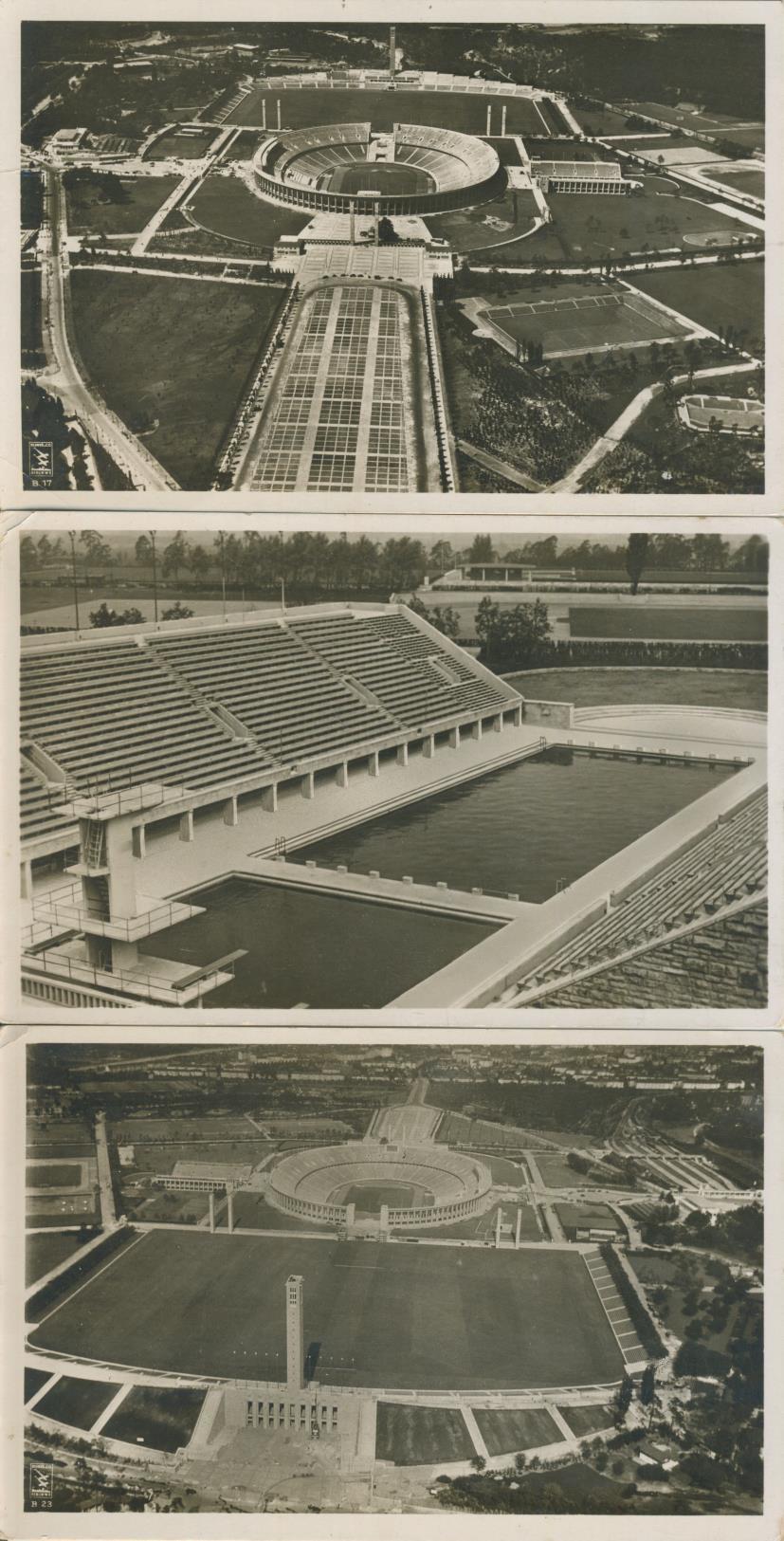
BERLIN OLYMPICS STADIUM AND SWIMMING POOL 1936 POSTCARDS General Olympic Postcards
A project aborted by the outbreak of the First World War and then shaped by Hitler, the Berlin Olympic Stadium was the cradle of the "Olympic Games of Shame" in 1936. This monument, typical of Nazi architecture and oversized for its time, was to serve the propaganda of the Third Reich and impress other nations!

Olympiastadion, Berlin, Germany, main stadium for the 1936 Summer Olympics.
Second, the Nazis have put up a very good front for the general visitors, especially the big businessmen." —Foreign correspondent William Shirer in his diary, Berlin, August 16, 1936. "In 1940 the Olympic Games will take place in Tokyo. But thereafter they will take place in Germany for all time to come, in this stadium."
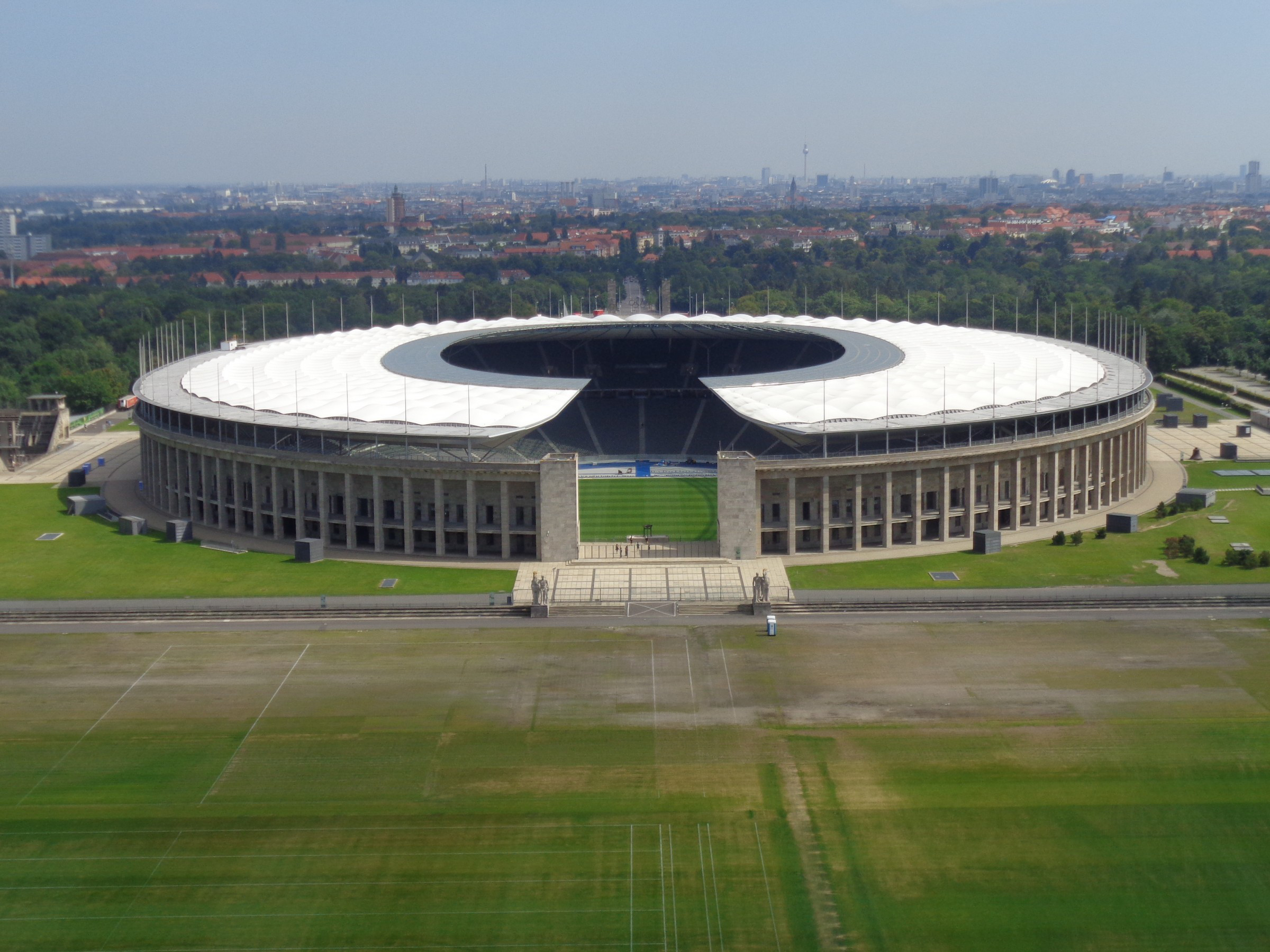
Berlin 12 August through 19 August, 2017 1936 Olympic Stadium Photo
The Hindenburg over Olympic Stadium in Berlin, August 1936. Berlin 1936 Olympic Games, athletic festival held in Berlin that took place August 1-16, 1936. The Berlin Games were the 10th occurrence of the modern Olympic Games. The 1936 Olympics were held in a tense, politically charged atmosphere.

A History of Olympic Torchbearers
Aug. 1,1936. Imagno—Getty Images USA's legendary Jesse Owens on his way to winning one of his four gold medals, in the men's 100 meter final at the 1936 Olympic Games in Berlin.

Bryan Pinkall's World of Opera, Olympics, and More 1936 Berlin Summer Olympic Opening Ceremony
Phone +49 30 30688100. Web Visit website. Massive and imposing, the Olympiastadion was originally built in Berlin for the 1936 Olympic Games. Today, it is still in use. Here's how to visit the Olympic Stadium to witness an excellent—yet sobering—example of the architecture favored by the National Socialist Party, picture Jesse Owen's record.

The Olympic stadium 1936 Olympic Stadium, Berlin Luke McKernan Flickr
Olympic Games Berlin 1936 Overview Results Athletes Stories Brand Medal Design Torch Berlin 1936 Date 31 July - 16 August Country Germany Athletes 3963 Teams 49 Events 129 Results Jesse OWENS 02:25 Jesse Owens's Inspiring History Berlin 1936 | Olympic Games Jesse OWENS Carl Lewis and Michael Johnson on the "incomparable" Jesse Owens
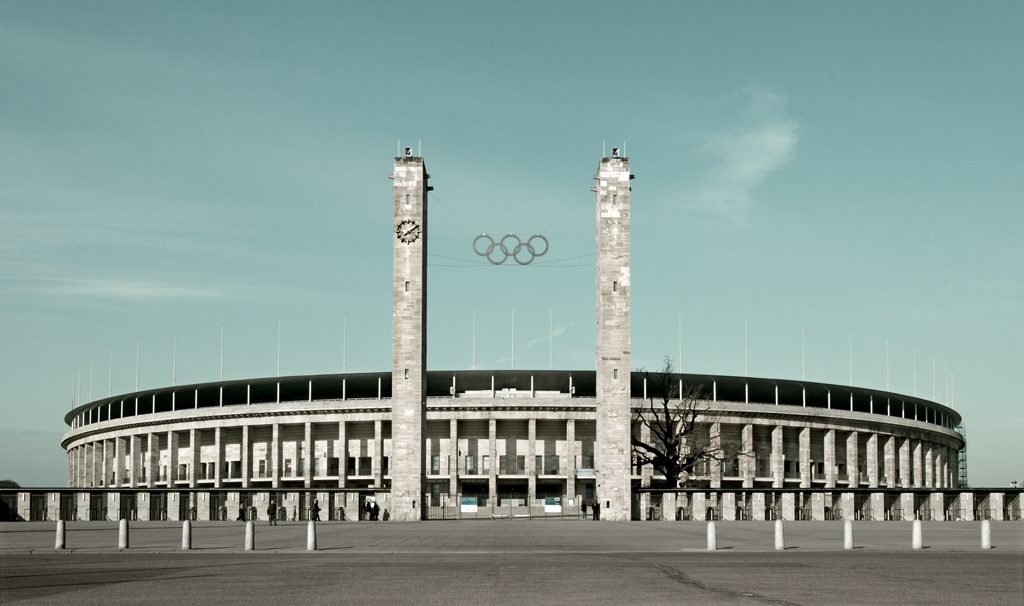
Berlin Olympics 1936 National Vanguard
Berlin's Olympiastadion and Glockenturm (Olympic Stadium and Bell Tower) was built for the 1936 Olympic Games when the 2400m horse-racing track in the Grunewald district, by Otto March 1909, was demolished in 1934 to make room for a new National Stadium designed by March's sons Werner and Walter March and supervised by Hitler's Imperial Interior.
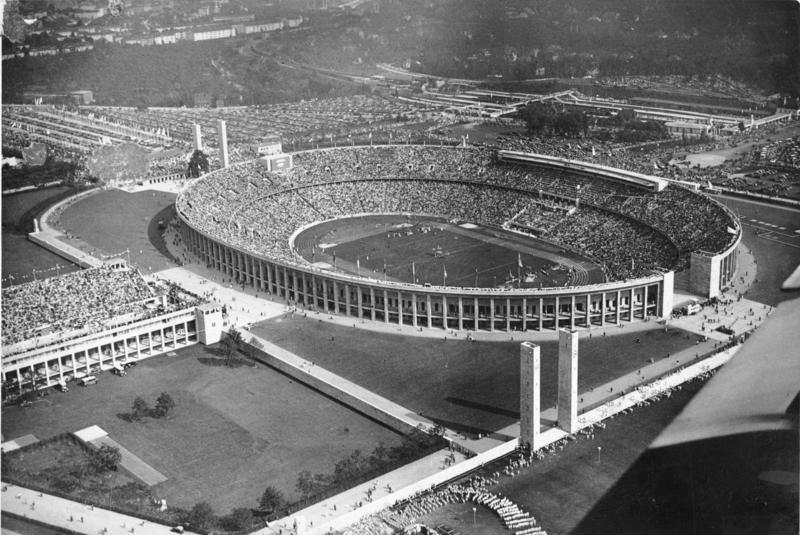
Berlin Olympic Stadium 1936 Games
The Olympiastadion ( German pronunciation: [oˈlʏmpi̯aˌʃtaːdi̯ɔn] ⓘ; English: Olympic Stadium) is a sports stadium at Olympiapark Berlin in Berlin, Germany. It was originally built by Werner March for the 1936 Summer Olympics. During the Olympics, the record attendance was thought to be over 100,000.
Aerial photograph of the Olympic grounds of the Berlin Olympics in 1936, including the Olympic
History of the Olympic Stadium Berlin 1868-1908 The historical beginning 1909 - 1916 The National Stadium and the Olympic dream 1917-1929 The "Sportforum" 1930-1933 Plans for the remodelling of the National Stadium 1934-1936 Construction of the Olympiastadion 1936 The Olympic Games 1936 1937-1945 The Olympiastadion before and during World War II

A Look Inside Hitler's 1936 Nazi Olympics Through Amazing Photographs
Berlin Olympic Stadium, stadium build for the 1936 Olympic Games in Berlin that is now used for international football matches. It is part of a sports complex originally called the Reich Sports Field in the Grunewald forest to the west of Berlin.
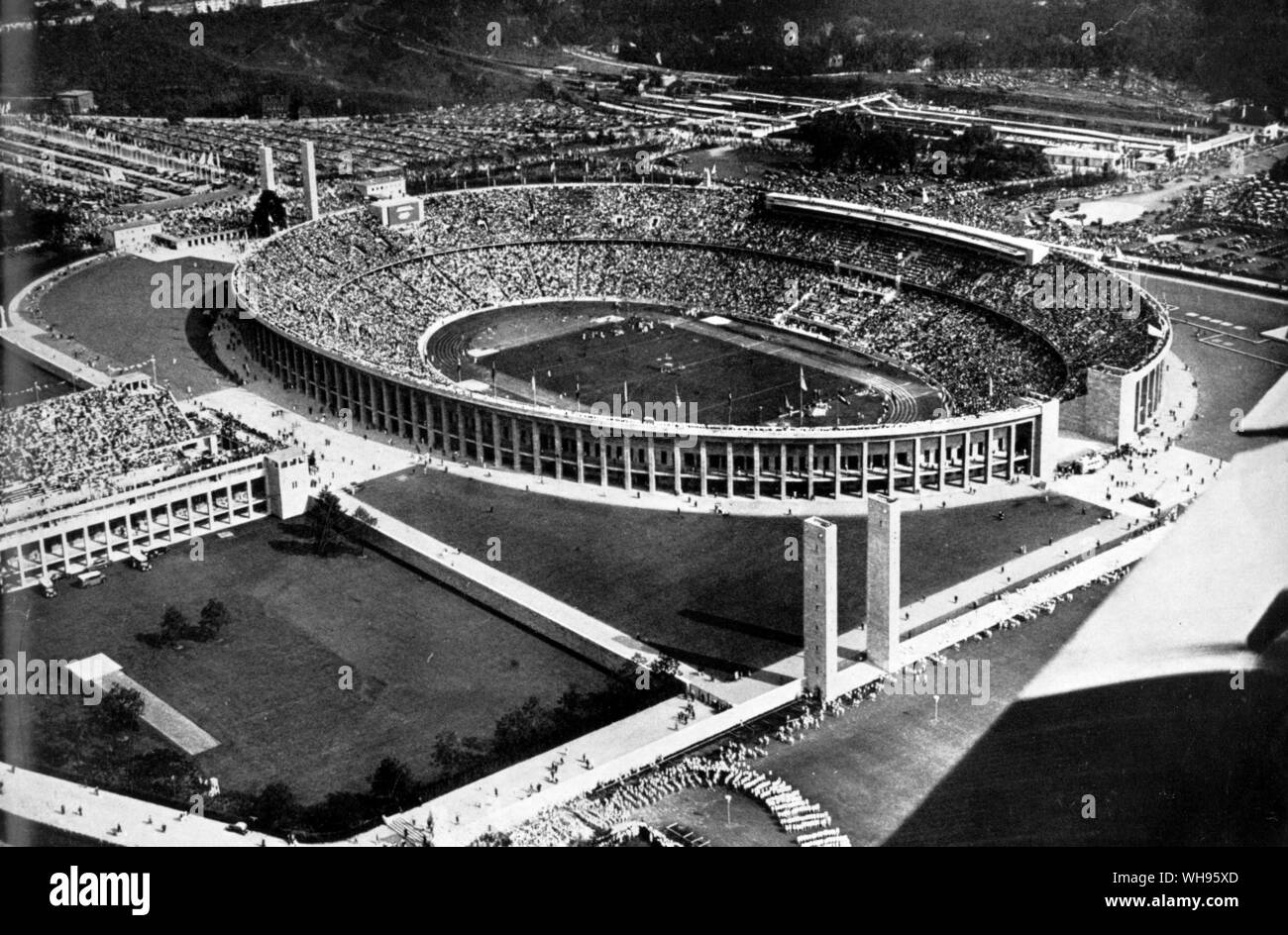
The Olympic Stadium and swimming pool Berlin Olympic Games Berlin 1936 Stock Photo Alamy
The Stadion Narodowy im.Kazimierza Górskiego (Polish pronunciation: [ˈstadʲjɔn narɔˈdɔvɨ], English: Kazimierz Górski National Stadium), known for sponsorship reasons as the PGE Narodowy since 2015 (with patron being added in 2021), is a retractable roof football stadium located in Warsaw, Poland.It is used mostly for concerts and football matches and is the home stadium of Poland.
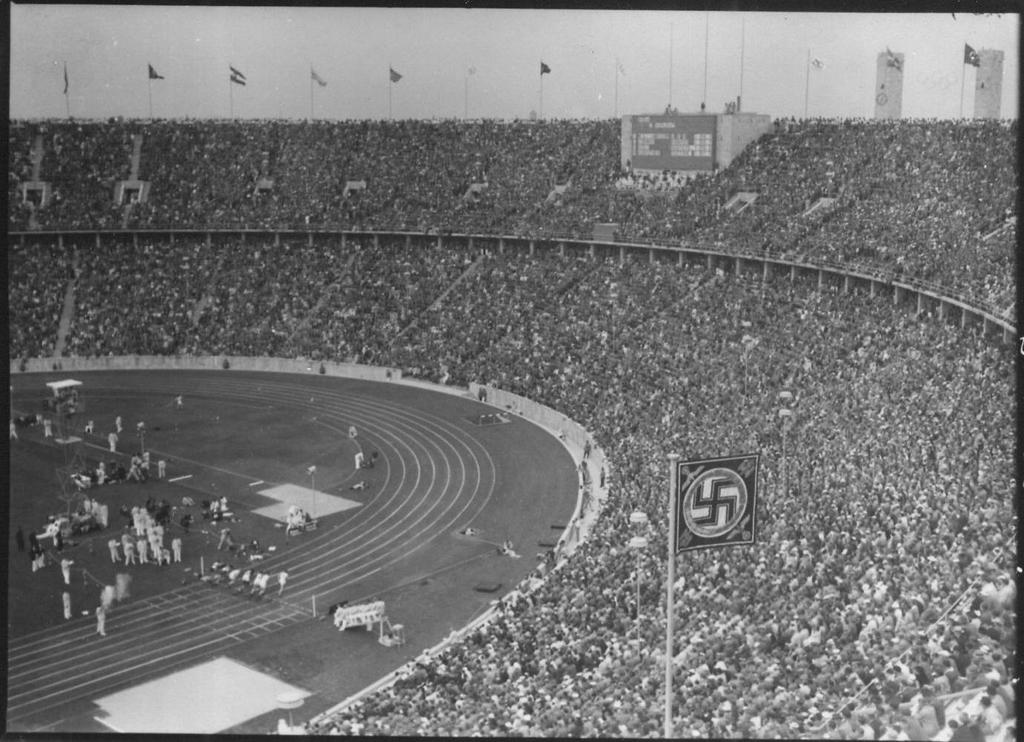
Photograph of the 1936 Olympic Stadium in Berlin, Germany NARA & DVIDS Public Domain Archive
The 1936 Berlin Olympic Games were more than just a worldwide sporting event, they were a show of Nazi propaganda, stirring significant conflict. Despite the exclusionary principles of the 1936 Games, countries around the world still agreed to participate. Key Facts 1 Nazi Germany used the 1936 Olympic Games for propaganda purposes.
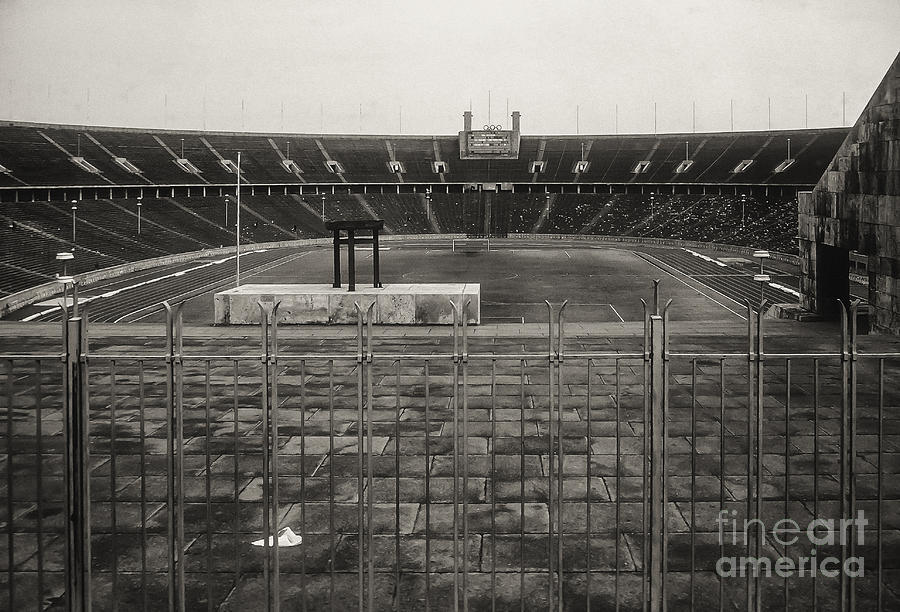
1936 Olympic Stadium 3 Photograph by Bob Phillips
Constructed between 1934 and 1936, Olympic Stadium held 110,000 fans. The stadium hosted the opening and closing ceremonies, as well as track and field events. The stadium has been renovated twice, and in both 1974 and 2006, it hosted the Fifa World Cup.

How Hitler's 1936 Nazi Olympics in Berlin changed Australian team forever Daily Mail Online
View of the Olympic Stadium, centerpiece of Berlin's Reich Sports Field. Berlin, Germany, 1936. The Nazis made elaborate preparations for the August 1-16 Summer Olympic Games. A huge sports complex was constructed, including the new stadium and state-of-the art Olympic village for housing the athletes. Olympic flags and swastikas bedecked the.